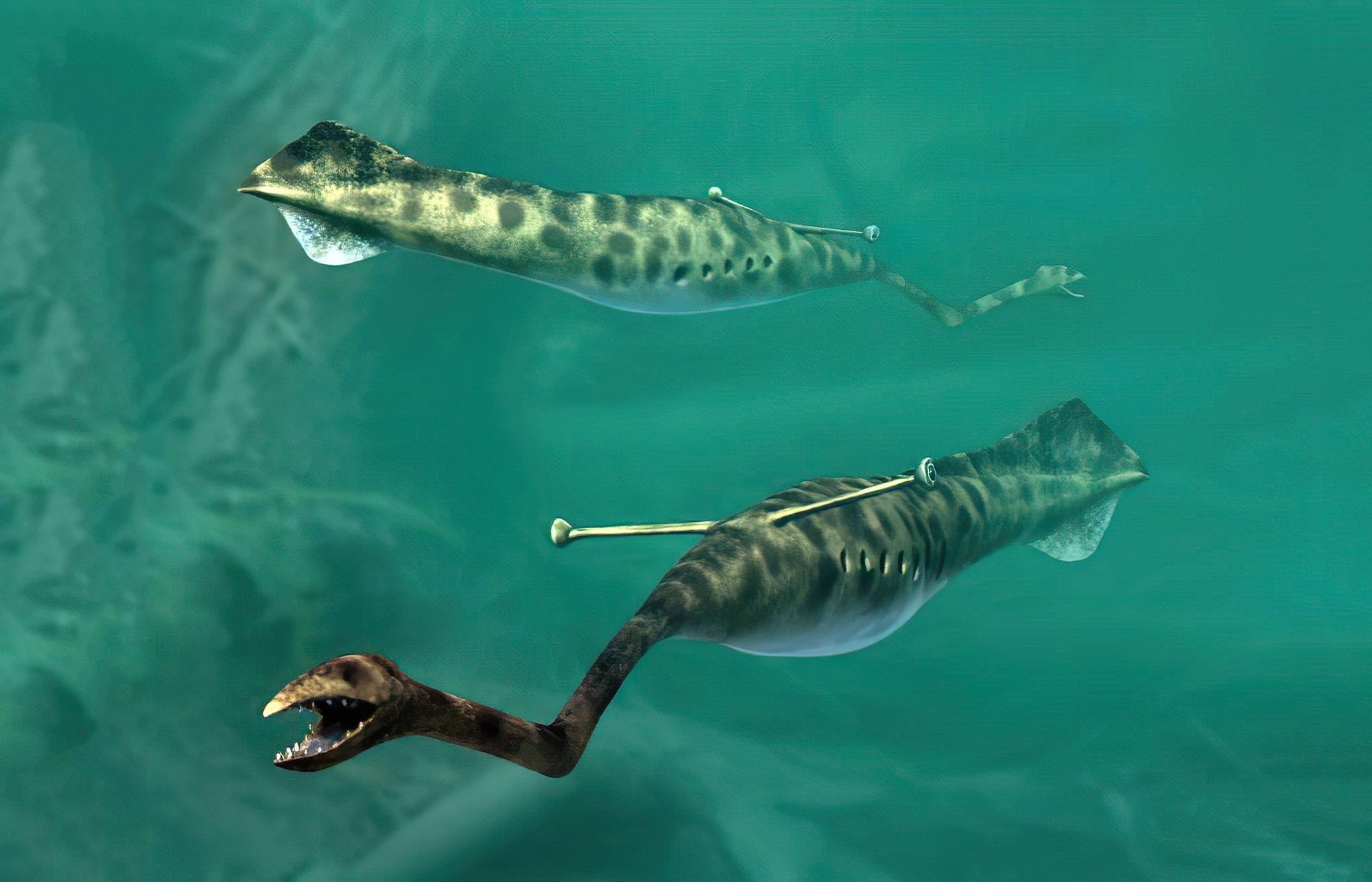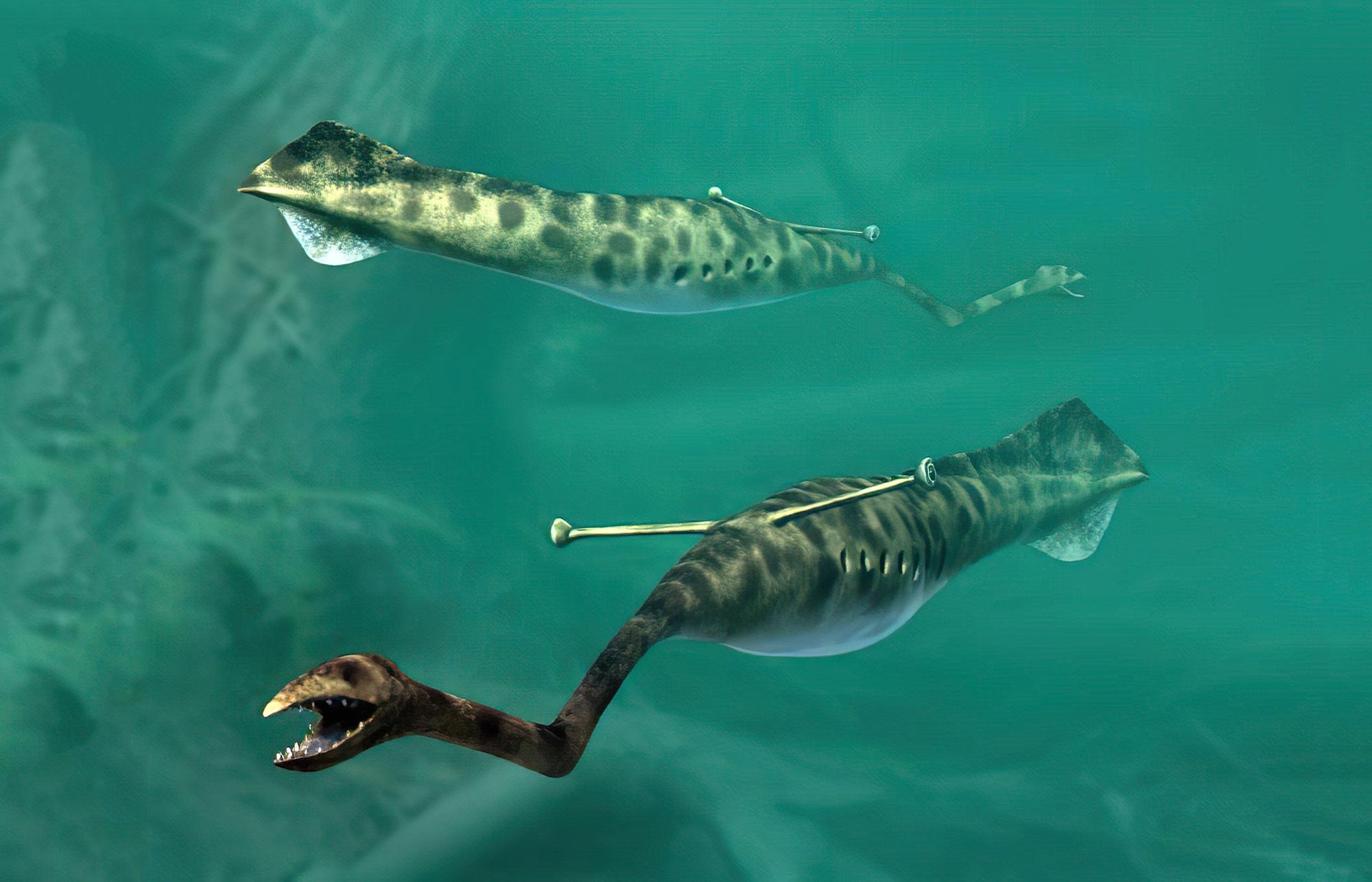
Potwór Tully (Gregarium Tullimonstrum) intryguje paleontologów od ponad 50 lat ze względu na niezwykłą anatomię i niepewną klasyfikację. Teraz zespół z Japonii wykorzystał technologię obrazowania 3D do zbadania tajemniczej skamieniałości i doszedł do wniosku, że nie był to kręgowiec, jak wcześniej zakładali niektórzy badacze. Chociaż dokładna taksonomia i typ bezkręgowców pozostaje do ustalenia, nowe badania dostarczają cennych informacji na temat ewolucji wczesnych kręgowców. Potwór Tully został odkryty w latach pięćdziesiątych XX wieku w Mazon Creek Lagerstätte w stanie Illinois, rzadkim miejscu z dobrze zachowanymi skamieniałościami morskimi o miękkim ciele. Źródło: Nobuo Tamura/Wikimedia
Skanowanie 3D enigmatycznej skamieniałości mogło ostatecznie rozstrzygnąć debatę na temat jej klasyfikacji jako kręgowca lub bezkręgowca.
Potwór Tully (Gregarium Tullimonstrum) są źródłem mistyfikacji dla paleontologów od ponad 50 lat ze względu na ich niezwykłą anatomię, co utrudnia ich klasyfikację. Niedawne badanie przeprowadzone przez zespół naukowców wysunęło teorię, że Tullimonstrum był kręgowcem podobnym do cyklostomów (ryb bezszczękowych, takich jak minogi i śluzice).
Ta hipoteza, jeśli okaże się słuszna, wypełniłaby brakujące ogniwo we wczesnym rozwoju[{” attribute=””>vertebrates. However, the research conducted so far has produced conflicting results, with some supporting the idea and others rejecting it.
Now, using 3D imaging technology, a team in Japan believes it has found the answer after uncovering detailed characteristics of the Tully monster which strongly suggest that it was not a vertebrate. However, its exact classification and what type of invertebrate it was is still to be decided.
In the 1950s, Francis Tully was enjoying his hobby fossil hunting in a site known as Mazon Creek Lagerstätte in the U.S. state of Illinois, when he discovered what would later become known as the Tully monster.

Discovered in the 1950s and first described in a paper in 1966, the Tully monster, with its stalked eyes and long proboscis, is difficult to compare to all other known animal groups. Unique to Illinois in the U.S., it became its state fossil in 1989. Credit: Takahiro Sakono, 2022
This 15-centimeter (on average), 300-million-year-old marine “monster” turned out to be an enigma, as ever since its discovery researchers have debated where it fits in the classification of living things (its taxonomic position). Unlike dinosaur bones and hard-shelled creatures that are often found as fossils, the Tully monster was soft-bodied.
The Mazon Creek Lagerstätte is one of the few places in the world where the conditions were just right for imprints of these marine animals to be captured in detail in the underwater mud before they could decay. In 2016, a group of scientists in the US proposed a hypothesis that the Tully monster was a vertebrate. If this was the case, then it could be a missing piece of the puzzle on how vertebrates evolved.
Despite considerable effort, studies both supporting and rejecting this hypothesis have been published in recent years, and so a consensus had not been reached. However, new research by a team from the University of Tokyo and Nagoya University may have finally brought an end to the debate.

Often used to study dinosaur footprints, these color-coded depth maps enabled the researchers to thoroughly investigate the structure of the Tully monster and other fossils from Mazon Creek. Credit: Mikami, 2022
“We believe that the mystery of it being an invertebrate or vertebrate has been solved,” said Tomoyuki Mikami, a doctoral student in the Graduate School of Science at the University of Tokyo at the time of the study and currently a researcher at the National Museum of Nature and Science. “Based on multiple lines of evidence, the vertebrate hypothesis of the Tully monster is untenable. The most important point is that the Tully monster had segmentation in its head region that extended from its body. This characteristic is not known in any vertebrate lineage, suggesting a nonvertebrate affinity.”
The team studied more than 150 fossilized Tully monsters and over 70 other varied animal fossils from Mazon Creek. With the aid of a 3D laser scanner, they created color-coded, three-dimensional maps of the fossils which showed the tiny irregularities which existed on their surface through color variation.
X-ray micro-computed tomography (which uses X-rays to create cross-sections of an object so that a 3D model can be created), was also used to look at its proboscis (an elongated organ located in the head). This 3D data showed that features previously used to identify the Tully monster as a vertebrate were not actually consistent with those of vertebrates.
Although the researchers are confident from this study that the Tully monster was not a vertebrate, the next step of the investigation will be to answer what group of organisms it does belong to, possibly a nonvertebrate chordate (like a fishlike animal known as a lancelet) or some sort of protostome (a diverse group of animals containing, for example, insects, roundworms, earthworms, and snails) with radically modified morphology.
Problematic fossils like the Tully monster highlight the challenge of piecing together the dynamic history of Earth and the diverse organisms that have inhabited it.
“There were many interesting animals that were never preserved as fossils,” Mikami said. “In this sense, research on the fossils from Mazon Creek is important because it provides paleontological evidence that cannot be obtained from other sites. More and more research is needed to extract important clues from Mazon Creek fossils to understand the evolutionary history of life.”
Reference: “Three-dimensional anatomy of the Tully monster casts doubt on its presumed vertebrate affinities” by Tomoyuki Mikami, Takafumi Ikeda, Yusuke Muramiya, Tatsuya Hirasawa and Wataru Iwasaki, 16 April 2023, Palaeontology.
DOI: 10.1111/pala.12646
The study was funded by the Masason Foundation, the Fujiwara Natural History Foundation, JSPS KAKENHI, and the World-Leading Innovative Graduate Study Program for Life Science and Technology.

„Analityk. Nieuleczalny nerd z bekonu. Przedsiębiorca. Oddany pisarz. Wielokrotnie nagradzany alkoholowy ninja. Subtelnie czarujący czytelnik.”



